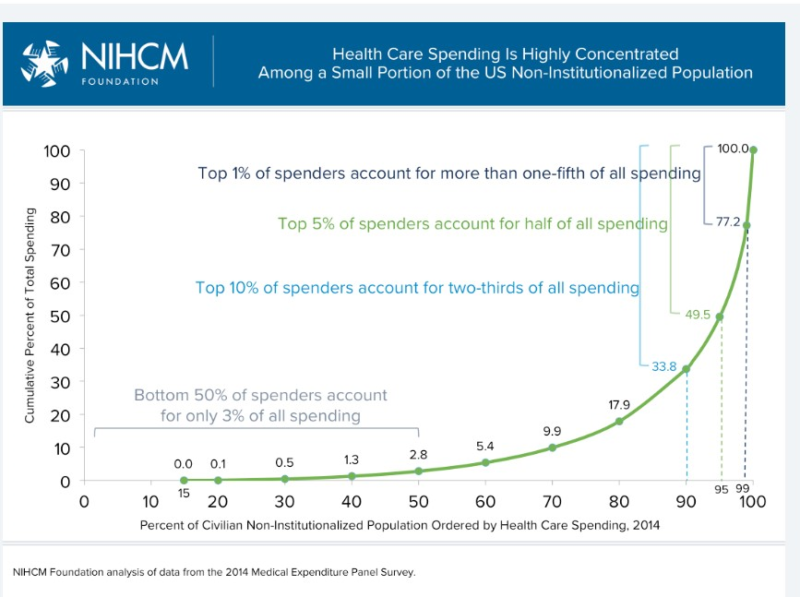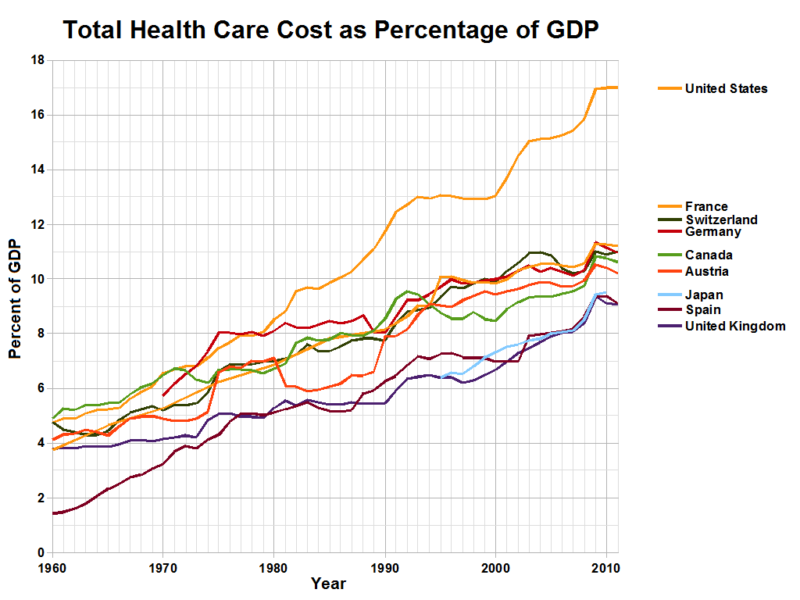Are We Really Ready for Free-Market Healthcare?

Of all the big-ticket programs being kicked around in the Democratic primaries, Medicare-for-All seems most likely to succeed. Opponents of single-payer care, and I count myself as one, have largely played defense. Proclaiming the evils of a single-payer system without emphasizing how tangible market reforms can make peoples’ lives better amounts to implicitly stumping for the status quo. That’s not going to cut it, because the status quo is a mess.
Very few Americans seem happy with the current hodgepodge of arrangements between private insurers, employers, and healthcare providers. Throw in insurance premia barely affordable to many, stiflingly complex regulations, and a near-complete lack of price transparency, and it’s clear why so many gravitate to sets of reforms that sound comprehensive.
Many economists scoff at the notion that healthcare is “different” than other goods and services or “a human right.” Stepping back, it’s curious that liberal democratic countries that are comfortable using much freer market mechanisms for other life essentials like food and shelter have healthcare systems that by and large range from heavily regulated to socialized. Even countries that emerged from the former Soviet bloc with rapid market-based reforms generally retained a socialized healthcare system.
We should better communicate how real, tangible market reforms in healthcare would make peoples’ lives better. And only market reforms have the potential to reduce our astronomical spending on healthcare. The big problem is people may not be ready.
Markets and Choice
Healthcare in the United States is a Hayekian nightmare–like someone pulled the plug from the price system that informs and equips people to make decisions on what to do with their scarce resources. Our current health regime provides no mechanism for patients or doctors to make tradeoffs based on prices, relying on an arm’s-length insurance company to bluntly administer the only source of price discipline. A maze of regulations and subsidies then ties insurance to our employers, shutting down choice among insurers as a way that competition and the price system could allow consumers to express their preferences.
A single Medicare-for-All system might extend coverage and realize some cost-efficiencies relative to our current mess but it wouldn’t solve the fundamental problem described above. It would merely replace private insurers with the government as the third party saying yes or no to each transaction. Buyers and sellers would continue to make decisions in the absence of real prices.
At Reason, Peter Suderman delves into expert responses to Elizabeth Warren’s attempt at a fully-financed Medicare-for-All plan, finding that, “the plan is full of dubious assumptions about the cost-savings that could be achieved under a single-payer system and the revenue that could be raised by the taxes and fees she would impose.” Without a price mechanism to navigate the maze of complex and difficult healthcare decisions available to us, don’t expect significant savings or efficiency.
Fortunately there are steps we can take to plug healthcare into the pricing system we use for almost everything else. The Trump administration recently announced new price transparency rules for insurers and hospitals designed to provide consumers with relatively simple and comparable information with which to comparison-shop. This might be a good first step, though the fact that we currently require extensive new regulations simply to make sellers quote prices shows just how confusing and contrived our current regime is.
At The Foundation for Research on Equal Opportunity, Avik Roy provides a more comprehensive market-oriented way forward. The numerous proposals provide a blueprint for an alternative to more government-oriented solutions. Perhaps paramount among his recommendations is a transition away from employer-provided coverage to plans shopped for and selected by individuals.
Consumer choice is much more effective than employer contracts at disciplining insurers’ behavior and would allow patients more personalized choices than what employers can offer to an entire company. Such reforms would also help address the changing nature of work, where people often have several smaller jobs including independent contracting.
It’s rather eye-opening that such a plan hasn’t already been adopted, especially in the market-oriented United States. Have free-market advocates not done a good job of making the case, or is there some deeper reason people often recoil at a healthcare system offering more freedom and choice? Why is healthcare different?
Life and Death
At any given time, the healthcare market is concentrated among a small number of patients. The chart below, reprinted from NIHCM Foundation, reveals that 5 percent of the U.S. population in a given year accounts for half of all healthcare spending–the top 10 percent account for two thirds.

This population includes many at the end of their lives as well as the chronically and acutely sick and injured. This is why it’s unlikely that a move to a single-payer system, all things equal, would dramatically reduce costs. It would merely swap the government for private insurers as the third party saying yes or no. The only solution to this aspect of increasing costs is for people to make more of the difficult tradeoffs themselves.
That idea is economically sound, but at least at the top of the spending distribution, human beings aren’t well equipped to make these choices. What if you could increase the length of your life by a few years at the cost of you and your family’s entire life savings? That question sounds more like a moral dilemma than a budgeting exercise.
Would your family choose to spend more or less than you? How much would you choose to spend to help a stranger without a life savings? This is in part why we have insurance, but there are reasons to believe our current approach in unsustainable.

The chart above illustrates the pronounced and widening gap between health spending as a percentage of GDP in the U.S. versus other developed economies. But there’s another trend at least equally as profound–spending is going up everywhere, more than doubling as a percentage of GDP over a 50-year period.
This stark result is likely due to a combination of the insurance model, whether government or private, and the fact we’re getting better and better at healthcare. Life expectancy increased by about 20 years during that period, something everyone can celebrate, but at what cost?
And that’s why healthcare is different. Throughout the vast majority of human history, medical technology was so rudimentary that almost nobody had to face the choice between employing significant resources to prolong their life or using them for something else.
The idea that we’ve overinvested in medical technology, that we’re in a sense too good at healthcare, may sound absurd. But consider that a large fraction of medical R&D is either directly subsidized by governments or large private foundations, or implicitly subsidized by our intellectual property protections.
There’s an undeniable cultural component to the way we subjectively value goods and services. For most of our history, the attitude that more healthcare is always better was a relatively good fit for the limited amount any doctor could do. Perhaps it’s no surprise that countries around the globe built heavily regulated or socialized healthcare systems that enable that attitude.
The market-based reforms proposed by Avik Roy and others don’t force choices as stark as the examples above. But more competition and individual choice in the insurance market will force these dilemmas on people to a greater degree.
We’ve gotten good enough at medical care that we have to make tough choices about where to allocate our resources. If we don’t, the lack of price signals in our healthcare market combined with heavily subsidized research mean the problem will likely get worse. Culture will have to catch up with technology, and it may be a long and difficult process before many people are ready.











